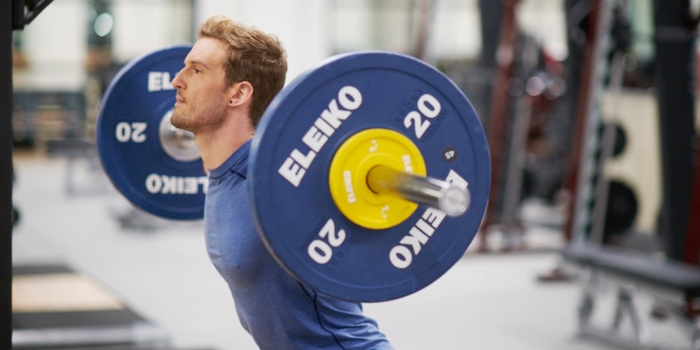TRAINING FOR GAINING: A GUIDE TO PUTTING ON MUSCLE MASS
![]()
![]()
August 10, 2019

By Steve Hendry, Personal Training Manager
So, you want to put on some muscle? Maybe it’s to look good at the beach. Maybe your shirt sleeves are looser than you might like. Maybe you want to be a little stronger. Whatever the reason would be, there can be a lot of confusion on how to go about doing it. Do I do an upper/lower split, full body, push pull? The answer may surprise you with not only its effectiveness, but its simplicity. Truth be told, it’s not the style of training that proves to be most effective, but rather the intensity at which you train that will help you put on size and strength. If you want to get bigger and stronger, you will have to lift heavier weights. Does this mean that everyone should be throwing 500 lbs. on the bar and ripping it off the ground? No…but if you struggle adding muscle and strength, chances are that the weights you’re currently lifting, are not quite heavy enough. Now unfortunately, I can’t write a blog post that will give you your specific weights and rep ranges for optimal growth, but I can lay out a blue print that will get you started in the right direction.
The first step in putting together a strength program is to pick the movements you want to get really good at, then go out and get really good at them. Sounds a little redundant, but time and tension are your greatest allies for adding mass that will last. You will want to break down your exercises into the following categories.
- Lower body hinge: This includes all hip dominant exercises. Deadlifts, Romanian deadlifts, kettlebell swings, and Olympic lifts are just some of the most popular choices.
- Lower Body Squat: These are knee dominated exercises. Any and all squatting variations will fall into this category. Back squat, front squat, goblet squat…and on and on.
- Upper body Pull: These exercises bring an external load towards the middle of your body. They can be categorized into vertical pulling, and horizontal pulling.
- Vertical: Pull up, lat pull down
- Horizontal: Inverted row, cable row, Barbell row
- Upper body push: Exercises that move an external load away from the middle of your body. These can also be categorized into vertical and horizontal motions
- Vertical: Military press, landmine press, bottoms up Kettlebell press, handstand
- Horizontal: Push up, bench press, chest press, dumbbell bench
- Loaded Carries: Simply put, pick up a weight, move it somewhere else, and place it back down. Farmers walk, waiters walk, overhead carries, sled pushes
- Lunge: Any single leg, or split stance variation of a lower body exercise. Walking lunges, lateral lunges, reverse lunges, Bulgarian split squats.
These types of exercises should be a staple in most people’s programming to begin with. So how do I use my new found knowledge of these movements to get big and strong? Well that’s a great question. Start with the following action items, and watch the results speak for itself.
Set aside 12 weeks for training. If you aren’t going to commit this amount of time, chances are you’re going to be disappointed in the results. Unfortunately, putting on muscle takes time, and you need to commit to a process to find success.
Week 1: Pick an exercise in each of these categories, and test your ability to complete a 5 rep max for that strength exercise. Example: for squats, if you can do 100 lbs. for 5 reps, and 110 for 4 reps, your 5 RM (rep max) would be 100 lbs. and your 4 RM would be 110 lbs. For loaded carries, pick a distance instead of reps. I like to start with 20 yards as a testing distance.
Week 2-11: Eat more food, and try to get stronger in each of the 5 RM’s that you have chosen. Pick a split/training frequency that works in your schedule. If you can train 4 days a week, then train 4 days a week. If you can train 2 days a week, then train 2 days a week. Just know that the less often you can train, the more exercises you will have to cover in a single session. But that will give you longer time to recover between sessions, meaning you can train at a higher intensity. One method is not necessarily better than the other, you will just have to pick which one fits in your schedule.
Week 12: Retest your strength. If you actually trained at a high enough intensity, you will be stronger. If you are not stronger, you did not push yourself hard enough. But guess what, that is ok! You now know that the next time you attempt this type of training, you will have to go a little bit beyond what you did the first time. I will be willing to bet that if you have increased your strength in that period, you will also have gained muscle mass to go along with it. Now go flex in front of the mirror, take a selfie with your t-shirt sleeves looking tighter, and be proud of the new, stronger version of yourself.